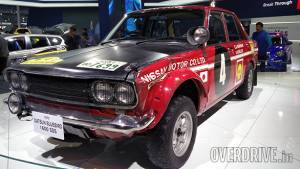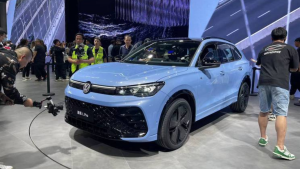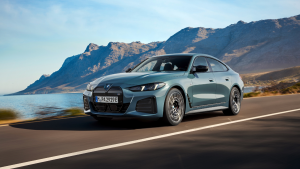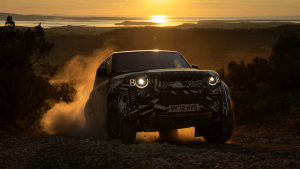Why Safari Rally Cars Were So Special
The Safari Rally (Earlier known as East African Safari) was once one of motorsport's most prestigious and celebrated rallies, but in 2002, it was sadly removed from the World Rally Championship (WRC) calendar as it no longer met the requirements of modern day special stage rallying. Luckily, it returned to the WRC in 2021, which I think is one of the best things that could have happened to motorsport.
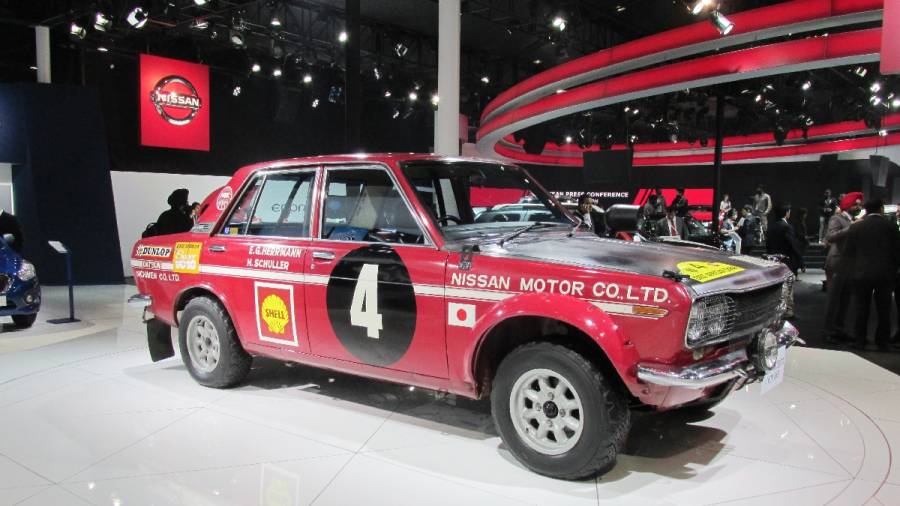 The earlier day Safari Rally cars, like this Datsun 1600SSS (winner in 1970), had several unique modifications.
The earlier day Safari Rally cars, like this Datsun 1600SSS (winner in 1970), had several unique modifications.
But with the passage of time, the entire character of the rally has changed, especially the kind of cars that once participated in it. Earlier the competing cars closely resembled their road versions and had several unique modifications that were needed to meet the inimitable challenges presented by the Safari.
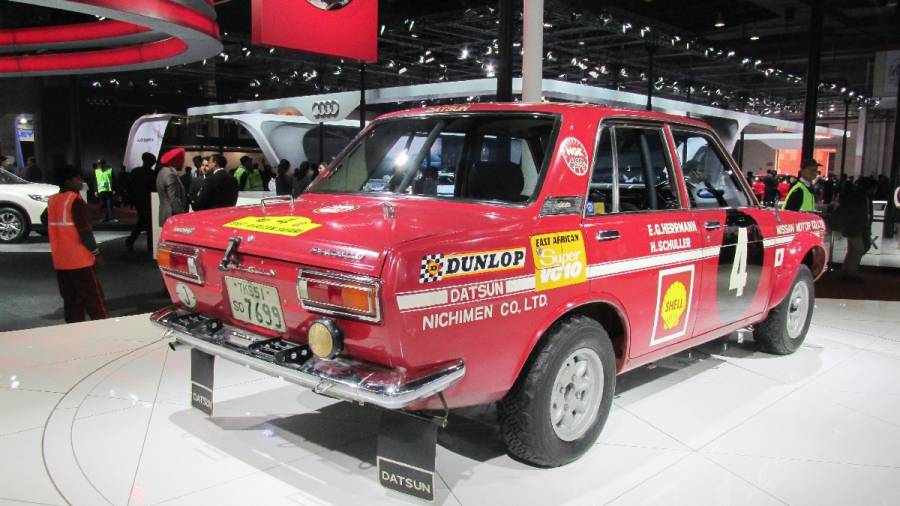 There were several additions at the rear, like the externally mounted extra reversing light, foot stands on bumper and grab handles on the boot.
There were several additions at the rear, like the externally mounted extra reversing light, foot stands on bumper and grab handles on the boot.
Featured here is the Datsun 1600SSS that in 1970, was the first ever Japanese car to be the overall winner at the legendary Safari Rally. This car with competition number 4 was driven by E. Hermann and H. Schuller, and as you can see in the photographs, it has few modifications done specifically for the Safari.The matt black paint on the bonnet is to cut down reflections from the hot African sun, but the most important alterations or additions are at the rear.
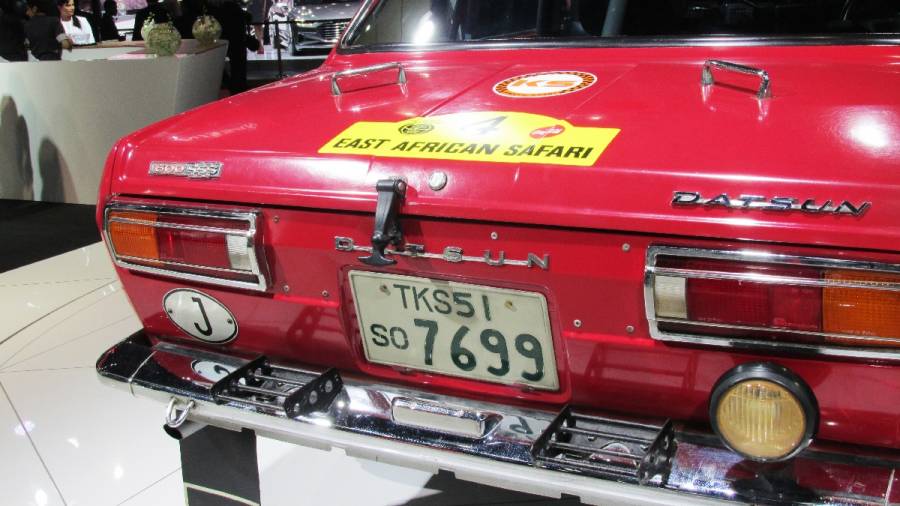 Note the specially fabricated foot stands and additional external reversing spread light.
Note the specially fabricated foot stands and additional external reversing spread light.
There are two unique characteristics of the Safari Rally. When it's hot and dry, it can be amongst the dustiest events in the world with the cars literally drowning in dust. The fine and thin talcum powder like dust gets into everything, including engines, often resulting in engine failures. And when it's wet, the African soil turns into soft and sticky slush, in which it's very easy for a vehicle to get bogged down.
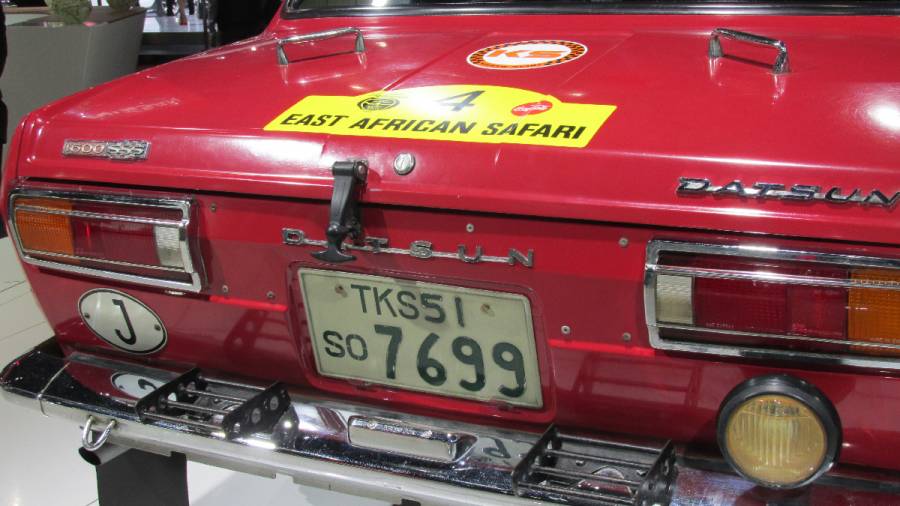 Hand grab handles are fitted on the boot lid and they enabled the co-driver to hold on even if the car was driven at speed.
Hand grab handles are fitted on the boot lid and they enabled the co-driver to hold on even if the car was driven at speed.
Therefore on rear wheel drive cars like this Datsun 1600SSS, specially fabricated foot stands were fitted on the rear bumper and hand grip handles were installed on the boot lid. Whenever they had to drive through the gluey mud, the co-driver would stand on the rear bumper and hold the handles on the boot. This additional weight pushed down the rear wheels, making it possible for the tyres to get a bit of traction. At times the co-driver would literally jump on these foot stands and this oscillating movement resulted in increased downward force, enabling the tyres to get grip in even really soggy soil! The advent of four-wheel drive rally cars, more powerful engines, advanced technology, and better tyres and so on, has of course done away with the need for such heroic feats.
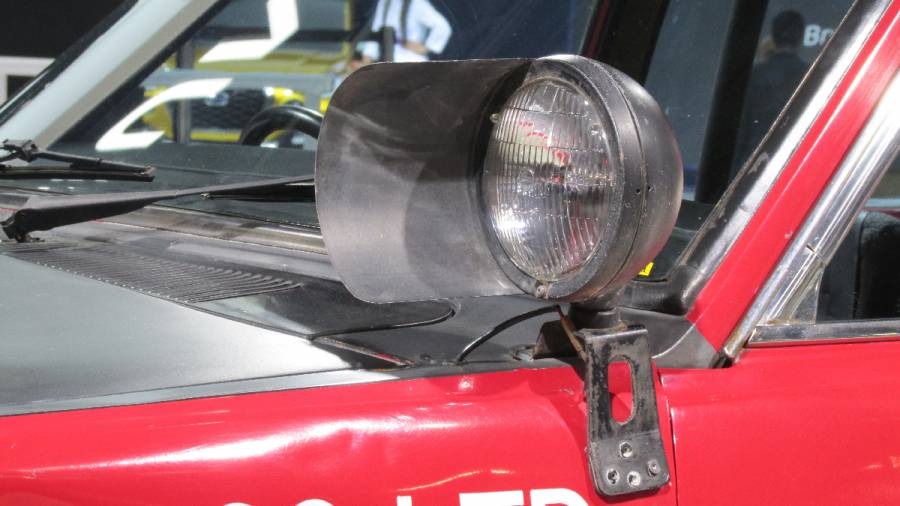 Such extra lights were installed on the A-pillar to allow animals to spot the fast moving cars earlier. Note the long shield to prevent the light from disturbing either the driver or co-driver.
Such extra lights were installed on the A-pillar to allow animals to spot the fast moving cars earlier. Note the long shield to prevent the light from disturbing either the driver or co-driver.
Another matchless feature of the Safari Rally was that animals, both wild and domestic, were always a danger due to which it was the only event where you saw cars with day-running lights mounted ahead of the A-pillars. Yes, another change or addition unique to the Safari Rally cars were these extra lights. They had shields to prevent the light from disturbing either the driver or co-driver and as these additional lights were fitted almost at eye level with the animals, they were able to pick the fast moving cars earlier. But, obviously this did not always happen and stories of cars running into zebras, antelopes, hyenas or even lions, were not uncommon! Some even reported being chased or attacked by elephants and rhinos! Those were the days my friend, we thought they'd never end
Photos courtesy Bob Rupani
Related Stories
Top Stories
Latest Videos
Most Popular
- Budget Sportbike Showdown: Kawasaki Ninja 500 vs Aprilia RS 457 vs Yamaha YZF-R3
- 2014 Triumph Daytona 675 vs 2024 Kawasaki ZX6R - A Decade of Evolution in Supersport Motorcycles
- Mumbai-Pune Expressway speed restrictions updated
- Nissan Magnite EZ-Shift review - is the AMT any good?
- Nitin Gadkari states that tax on Hybrids should be reduced to 12 percent in the coming future
